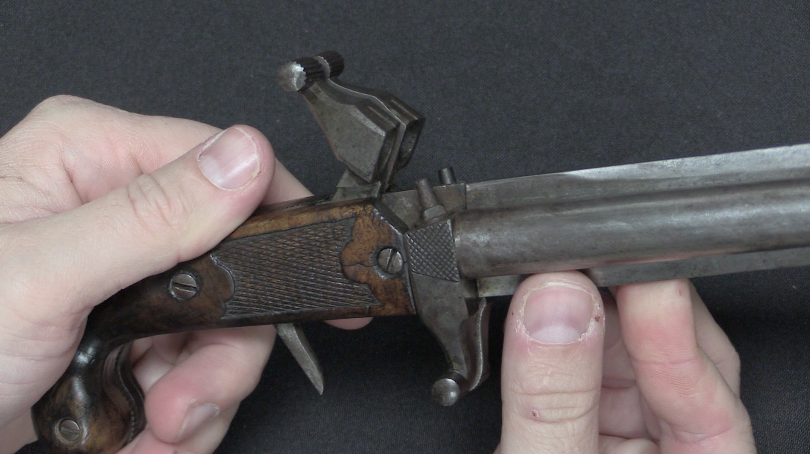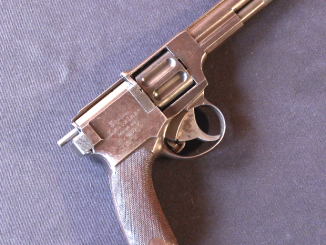When Germany capitulated at the end of World War Two, several hundred thousand German soldiers were stuck in Norway (thanks to the efforts of the Norwegian Resistance preventing them from moving south to reinforce against Allied landings in Normandy). These solders’ arms were surrendered to the Norwegians, and they formed the basis of Norwegian Army and Home Guard armaments for many years. With hundreds of thousands of K98k rifles to choose from, the Norwegians were able to pick out plenty in good condition. This included 400 ZF41 DMR/sniper rifles that were kept intact and taken into Norwegian service. Three different branches used the rifles, and they are marked on the chamber with either HAER (Army), FLY (Air Force), or K.ART (Naval Artillery).
In 1950, Norway began to get US military aid in .30-06, and they decided to rebarrel these Mausers to that cartridge. The process began in 1952 and they were all converted by the end of 1956. The new barrels are marked “KAL 7.62”, for 7.62x63mm. There was only a small amount of experimental further conversion to 7.62mm NATO. The ZF-41 models like this one were also given a new serial number tag riveted onto the scope mount with the rifle’s serial number (150001 through 150400).
Converted Mausers served in the Home Guard until the early 1970s, when they were replaced by the AG3 (HK91).
Video on German use of the ZF-41 optic:




It is fascinating to see the derivation of this German concept in COL Cooper’s “Scout rifle” concept that is still marketed today, albeit w/ much better optics.
i have always compared thE low powered ZF41 scope with todays red dots. For hubting before red dots there were similar scopes for driven hunts, when game suddenly jumps in front of you. The Germans wanted something similar for quick target acquisition on the battlefield. So calling it a sniper rifle is a bit misleading. Albeit because of shortage of proper scopes the ZF41 was pressed into sniper service.
AG3 are the H&K G3 rifle as far as I know, with some minor changes. Just like ouer swedish AK4. Or do I miss something?
“Converted Mausers served in the Home Guard until the early 1970s, when they were replaced by the AG3 (HK91).” You are right, the AG3 is licensed copy of the G3. There are minor differences, as a slightly longer stock (Norwegians are taller than Germans) and serrations on the bold carrier to facilitate silent loading of the AG3. One can insert the magazine, pull the charging handle all the way back, and slowly move it forward, all the way to the front. Doing that, the bolt won’t be properly in battery, but one can place the thumb on the serrations and push it the last millimeters. All you’ll hear is a clicking sound.
In the Bundeswehr we were tikd to stick a prioerly sizes nail or similar into the gas vent hole and push the bolt into battery. Having to have a tool handy for this is of course far from ootimal. The other methods we were trained to be more silent when charging the G3 was to have all sokdiers on command let go of the charging handle to only produce the loud sound once instead of a concert of many little locking noises. A variation thereof was to let thr bolt slowly nearly into battery and then the soldiers would slam the butts into the ground making the bikt go into battery. This was of course dangerous and could result in a discharge.
Makes me wonder why the modern production G3 type rifles do not incorporate the sinple finge grooves into their rifles? a useful sinple improvement, when you do not want to go all the way with a closure device like on the PSG-1.
By the time WWII came along, the German Army seems to have largely forgotten the lesson on sniping which they gave the world in WWI. The same fixation on automatic weapons and volume of fire instead of accurate and effective fire which blinded other Western militaries well into the present day. If you’re not hitting the target you’re just wasting ammo and revealing your position.